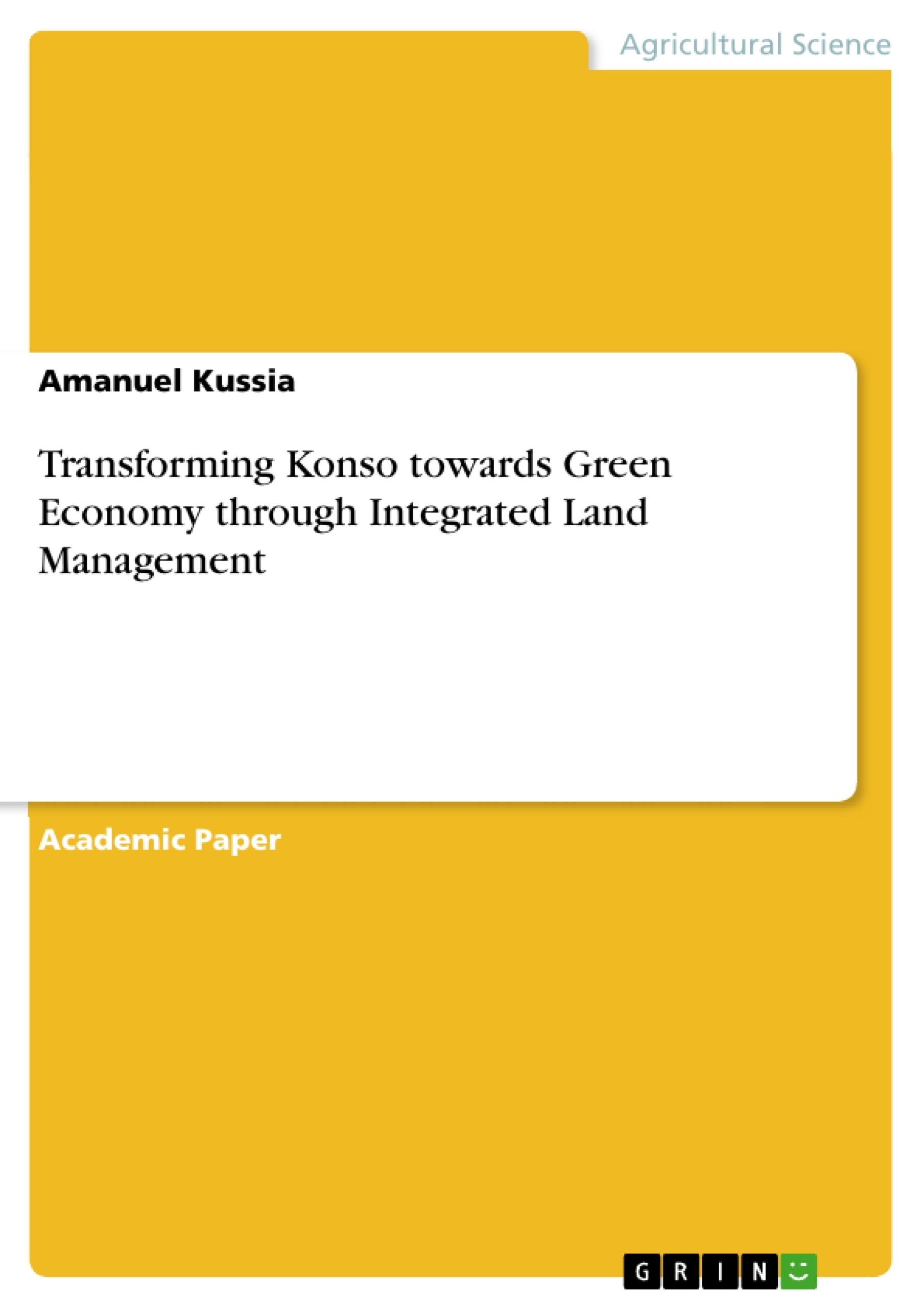This article examines the drivers, pressures, and impacts of land degradation on the ecosystem services and livelihood of the Konso people. To deal with the problem of land degradation, the People of Konso have been practicing well organized and innovative adaptation strategies in the form of indigenous soil and water conservation. The people are well known for their indigenous knowledge and skills of land management. Particularly, the antique and beautiful terraces, traditional agro forestry practices, and efficient irrigation methods are the prominent features of the Konso agricultural system. The people have been a model for the global community and their cultural landscape was registered by the UNESCO as one of the world’s heritage sites. The indigenous soil and water conservation practices have enabled the community to manage and live in a callous natural environment. However, these practices are now under the threat due to multiple factors which requires the attention of all stakeholders, principally of the Konso people (that is primarily responsible to maintain its identity of soil and water conservation).
Table of Contents
1. Introduction
2. A Brief Background about Konso Woreda
3. A Brief Literature Review
3.1. Definition of Key Concepts
3.1.1. Land
3.1.2. Land Degradation
3.2. Major Cause of Land Degradation
3.3. Impact of Land Degradation
4. Conceptual Framework
5. What are the Drivers of Land Degradation in Konso?
5.1. High Population Growth
5.2. High Demand for Land Resources
5.3. Poverty
5.4. Current Generations’ Work Ethics and Attitude
5.5. Motivation to Expand Territories (Informal Institutions)
5.6. Cultural Practices
5.7. Climate Change (Rainfall Variability, Drought)
5.8. Formal Institutions
6. What are the Pressures that Cause Land Degradation in Konso?
6.1. Over Intensive Land Use
6.2. Deforestation and Removal of Natural Vegetation
6.3. Soil Erosion
6.4. Reduction of the Quantity and Quality of Water Resource
7. State of Quality of Land Resource in Konso
8. What are the Impacts of Land Degradation in Konso?
8.1. Impact on Ecosystem Services
8.2. Impact on Livelihood
8.2.1. Impact on physical Asset
8.2.2. Impact on Financial Asset
8.2.3. Impact on Natural Asset
8.2.4. Impact on Human Capital
8.2.5. Impact on Social Capital
9. What Is Being Done and How Effective Is It?
9.1. Soil and Water Conservation
9.2. Livelihood Diversification
10. Where is the Woreda Heading? (Conclusion)
11. What Actions Could Be Taken for a More Sustainable Future? (Recommendations)
References
- Citation du texte
- Amanuel Kussia (Auteur), 2018, Transforming Konso towards Green Economy through Integrated Land Management, Munich, GRIN Verlag, https://www.grin.com/document/437812
-

-

-

-
Téléchargez vos propres textes! Gagnez de l'argent et un iPhone X. -

-
Téléchargez vos propres textes! Gagnez de l'argent et un iPhone X. -

-
Téléchargez vos propres textes! Gagnez de l'argent et un iPhone X. -

-
Téléchargez vos propres textes! Gagnez de l'argent et un iPhone X. -

-
Téléchargez vos propres textes! Gagnez de l'argent et un iPhone X. -

-
Téléchargez vos propres textes! Gagnez de l'argent et un iPhone X. -

-
Téléchargez vos propres textes! Gagnez de l'argent et un iPhone X. -

-
Téléchargez vos propres textes! Gagnez de l'argent et un iPhone X.

